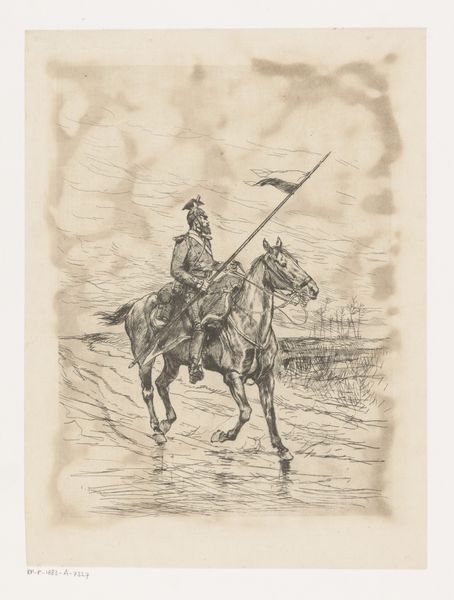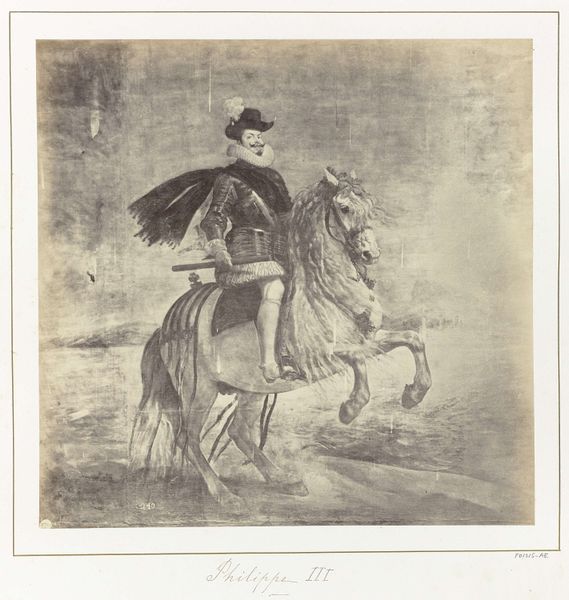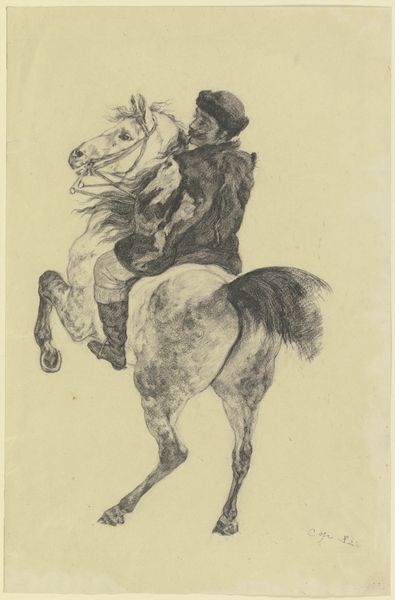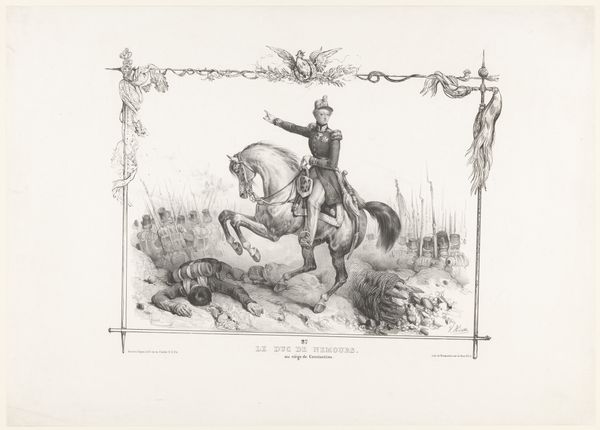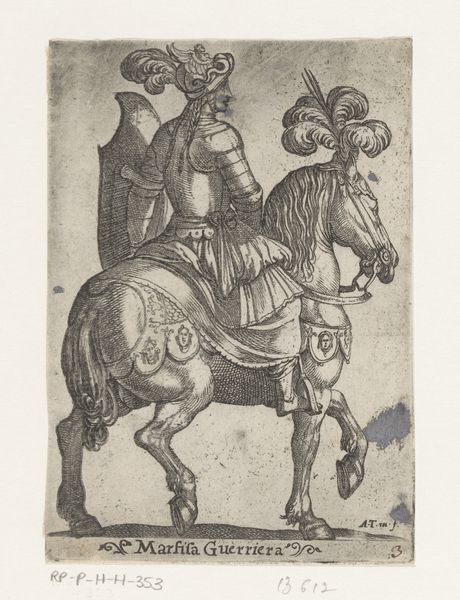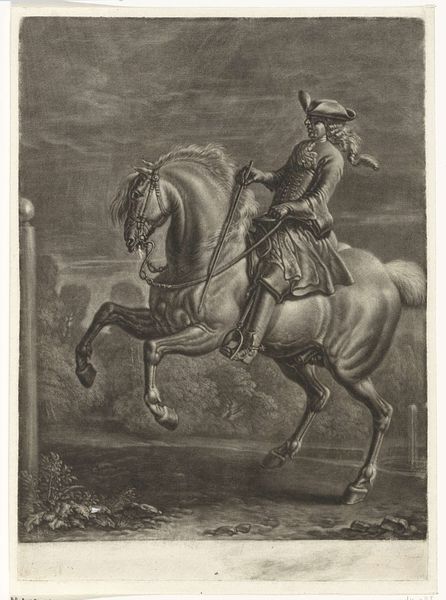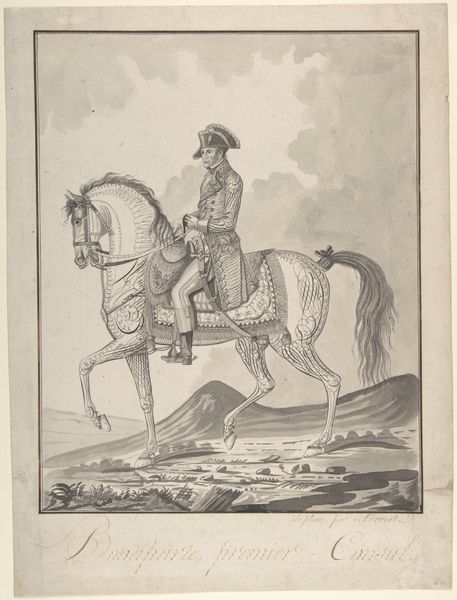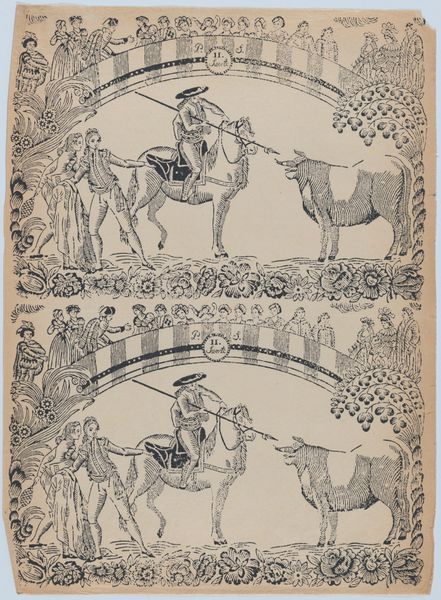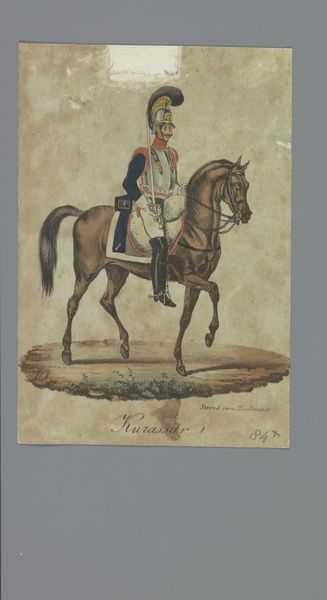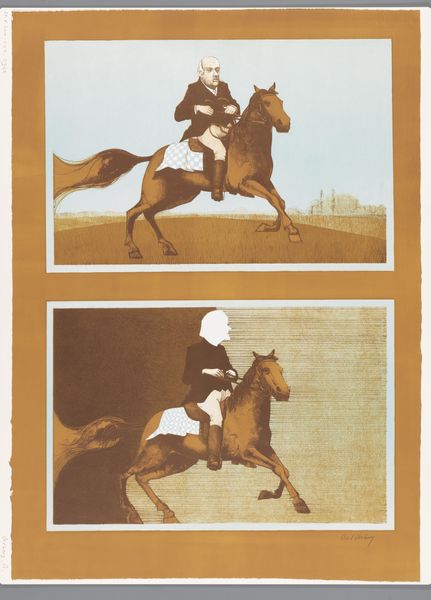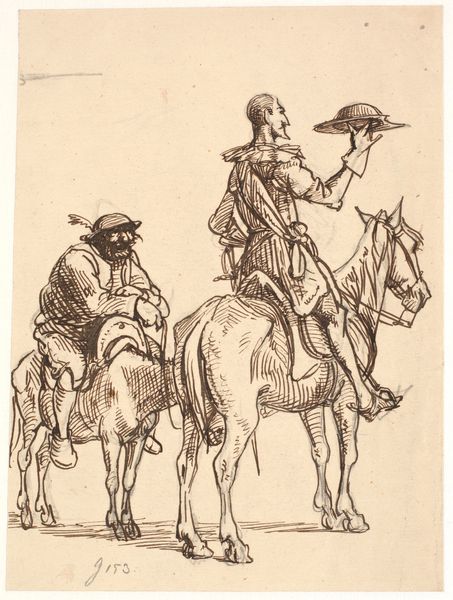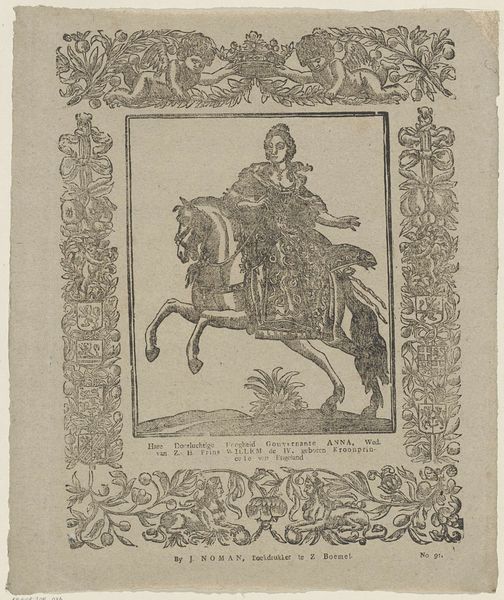
Tegeltableau met portret prins Willem V te paard, met opschrift: WILLEM DE 5DE PRINS VAN ORANIE 1760 - 1795
0:00
0:00
anonymous
Rijksmuseum
ceramic
#
portrait
#
dutch-golden-age
#
ceramic
#
genre-painting
#
history-painting
Dimensions: height 39 cm, width 26 cm, height 29 cm, width 42 cm, depth 3 cm
Copyright: Rijks Museum: Open Domain
Curator: This is a ceramic tile tableau, dating from 1760 to 1795, now held here at the Rijksmuseum. It depicts Prince William V of Orange on horseback. The maker remains anonymous. Editor: It's a striking image. The stark contrast of the monochromatic painting and the tiled medium lends a unique almost ethereal feel. It's like a memory emerging from the past. Curator: Precisely. Equestrian portraits, of course, carried significant symbolic weight. Power, nobility, and control are all conveyed through the composition and the heroic representation. Consider, too, how tile, as a common domestic material, elevates William V into the realm of the everyday. It’s an interesting tension. Editor: It makes me think about visibility, both literally and metaphorically. This tableau, potentially displayed in a home, brings the elite figure of William V into the domestic space, reminding viewers of the constant, yet often unseen, power structures at play in their lives. Is it subtle propaganda? Curator: One could certainly interpret it that way. But equally, in the context of domestic life, it offers us clues about the kind of symbolism ordinary people chose to surround themselves with. Was it reverence, aspiration, or simply an aesthetic choice reflecting Dutch identity? Editor: Perhaps a bit of all three? Consider the horse, rearing up in what appears a display of strength. Yet, the horse’s head is turned slightly, an awkward gesture that diminishes its bravado. Is this artistic inexperience or a deliberate subversion of the heroic? Curator: It's a wonderfully ambivalent symbol. I also find myself thinking about its creation at a time of significant political unrest within the Dutch Republic; William V was the last stadtholder before the Batavian Republic was proclaimed. These symbols took on even greater resonance during times of transition and conflict. Editor: Absolutely. This tableau exists at an intersection of art, history, and political ideology. It’s not just a portrait; it’s a tangible piece of history asking questions about power, identity, and representation. Curator: Indeed. It shows us how carefully considered and rich in symbolic weight seemingly everyday objects from the past can be. Editor: Right, and how critically exploring an artifact can deepen one’s appreciation for the social forces and artistic choices that shape our visual landscape even today.
Comments
No comments
Be the first to comment and join the conversation on the ultimate creative platform.

